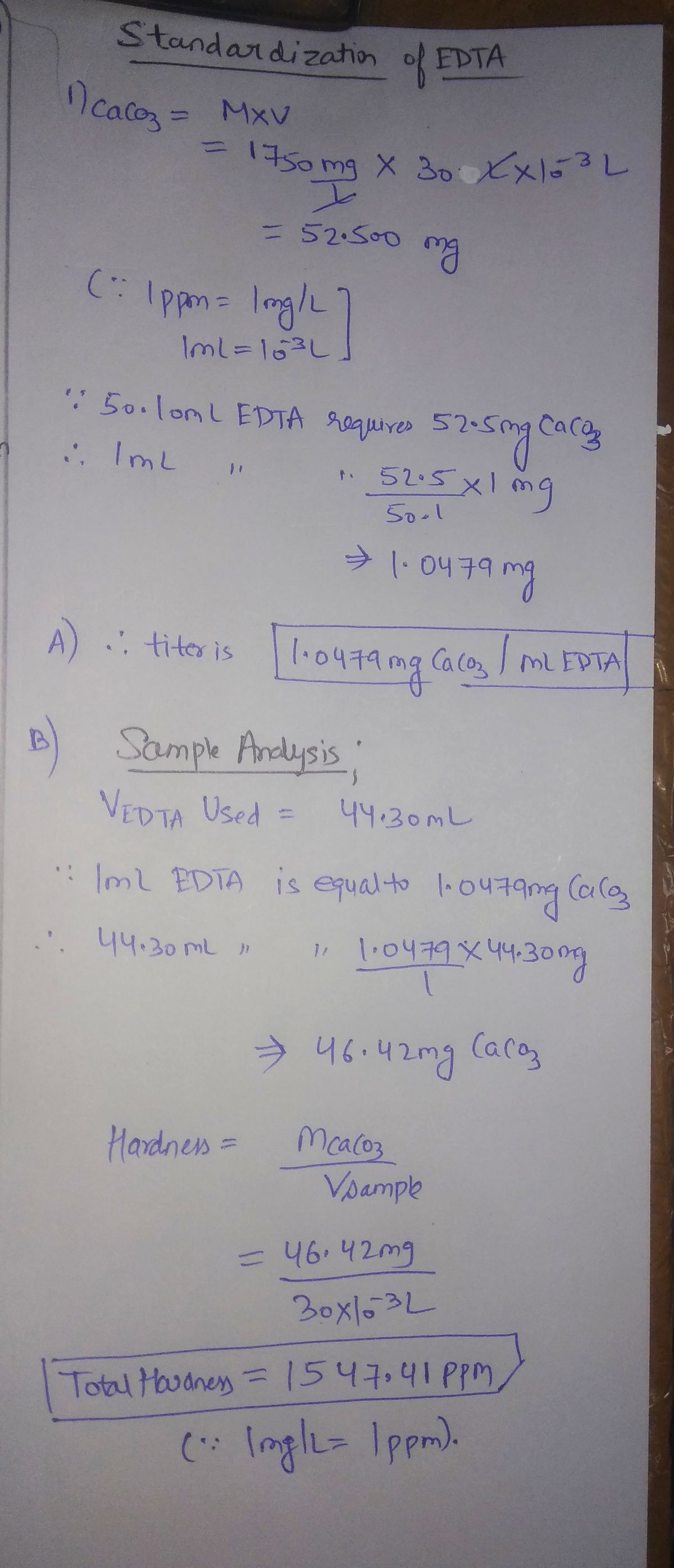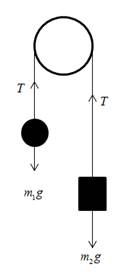Step 1
The question is based on the concept of complexometric titrations.
We have to calculate hardness of the given water sample.
hardness is due to presence of chlorides, sulphates, carbonates of calcium and magnesium ions.

Step 1
The question is based on the concept of complexometric titrations.
We have to calculate hardness of the given water sample.
hardness is due to presence of chlorides, sulphates, carbonates of calcium and magnesium ions.

Two objects with masses of 3.00 kg and 5.00 kg are connected by a light string that passes over a frictionless pulley, as in Figure P4.66. Determine (a) the tension in the string, (b) the acceleration of each object, and (c) the distance each object will move in the first second of motion if both objects start from rest.

Figure P4.66
Explanation:
Given info: The masses are
The free body diagram is given below.

From the free body diagram,
Re-arrange Equation (II) to get a.
Substitute Equation (III) in (I) and re-arrange to get T.
Substitute
Conclusion:
The tension in the string is 36.8 N.
</body> of your blog.